The Necessity of Global Expansion with a Multilingual Website

In today’s world, where geographical boundaries are meaningless in the digital space, #globalization and access to a wider #target_market are no longer an option, but a necessity.
Businesses seeking sustainable growth and development must think beyond their local markets and consider the needs of users with #language_diversity.
This is where the importance of multilingual website design peaks.
Having a website that offers content in multiple languages not only allows you to connect with potential customers worldwide but also demonstrates the credibility and professionalism of your business.
Imagine a customer from Germany or China visiting your website and being able to read your product or service information in their native language; this will create a very positive user experience for them and significantly increase the likelihood of them becoming a loyal customer.
Ignoring this aspect of online presence means losing a large part of the global market potential.
Many companies enter the digital arena from the outset with the view that they will sooner or later need to support multiple languages; therefore, planning for multilingual website design from the initial design phase can significantly reduce future costs and complexities.
This proactive approach allows businesses to compete with greater confidence in international markets and gain their share of this large market.
Designing a multilingual portal goes beyond mere text translation; it involves localizing content and user experience for different cultures.
This essential step creates a bridge between your business and global audiences.
Is your e-commerce website ready to attract maximum customers and increase sales? Rasaweb transforms your online business with modern and efficient e-commerce website design.
✅ Increased speed and improved SEO
✅ Excellent user experience on mobile and desktop⚡ Get free e-commerce website design consultation from Rasaweb!
Strategic Advantages of an International Website
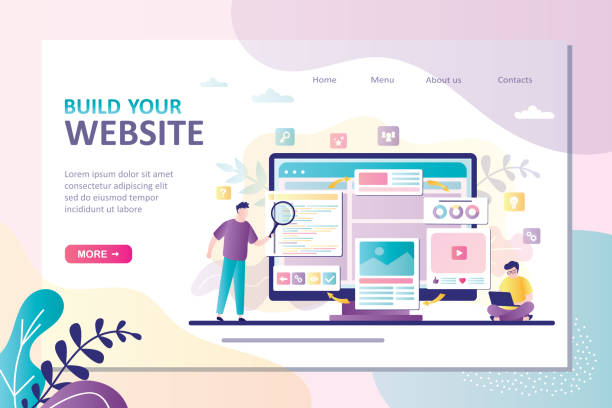
A multilingual website design brings a set of strategic advantages to businesses that go beyond merely reaching new audiences.
One of the most important of these advantages is improved #international_SEO.
Search engines like Google rank websites that provide quality content in multiple languages higher in international search results.
This means increased organic traffic and attracting more targeted visitors from around the world.
When users find information in their own language, #customer_trust in your brand significantly increases.
This sense of trust, in turn, leads to higher conversion rates and long-term customer loyalty.
Monolingual websites, no matter how excellent their content, face an unequal #competition against their multilingual rivals in international markets.
In fact, a website with multiple language capabilities positions you as a global leader in your industry.
This approach not only leads to increased sales and revenue but also creates a powerful and credible image of your brand at an international level.
#Multilingual_website_design gives businesses the opportunity to directly connect with new markets and meet their specific cultural and linguistic needs.
This can include offering customer support in various languages, targeted advertising, and even localizing products or services.
Ultimately, investing in building a multilingual portal is a long-term investment in your business’s global growth and success, which will yield significant returns.
This strengthens your online presence across a broader scope.
Addressing Technical Challenges in Implementing Multiple Languages

Although the benefits of multilingual website design are numerous, its implementation also comes with several technical challenges that require careful planning and specialized knowledge.
One of the first challenges is deciding on the #URL_structure; should subdomains (e.g., en.example.com), subdirectories (e.g., example.com/en), or URL parameters (e.g., example.com?lang=en) be used? Each option has its specific advantages and disadvantages in terms of SEO and management.
Another challenge is #content_management.
How can one ensure that content is correctly translated, kept up-to-date, and available for each language? This requires a robust Content Management System (CMS) and an efficient translation process.
Also, #hosting and server-related issues, such as choosing CDN (Content Delivery Network) servers to reduce loading times in different geographical regions, become important.
It should be noted that #international_website_design goes beyond merely adding a language switcher option; it also includes localizing dates, currencies, number formats, and even images.
Implementing Hreflang tags for search engines is also of great importance to ensure that the correct language version is displayed to users in different regions.
Ignoring these technical details can lead to a poor user experience and SEO problems.
Therefore, collaborating with an experienced web development team in #multilingual_website_implementation is crucial to overcome these challenges.
These complexities further highlight the need for a comprehensive and precise approach in the design and development process.
| Technical Challenge | Description | Suggested Solution |
|---|---|---|
| URL Structure | Choosing between subdomain, subdirectory, or URL parameters | Using subdirectories or subdomains for better SEO |
| Content and Translation Management | Coordination and updating of translated content | Using a CMS with built-in multilingual capabilities or powerful plugins |
| International SEO (Hreflang) | Ensuring the correct language version is displayed to users and search engines | Precise implementation of Hreflang tags in page headers |
| Website Loading Speed | High loading times for users from distant regions | Using CDN (Content Delivery Network) |
| UI/UX Localization | Matching user interface and user experience with local cultures | Cultural research and flexible UI design |
Choosing the Best Approach for Multilingual Structure
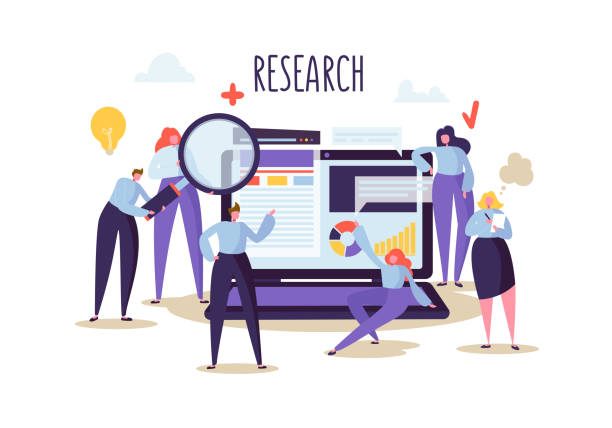
When planning for multilingual website design, one of the key decisions is choosing the appropriate structure for web addresses (URLs), which directly impacts SEO and site management.
There are three main approaches in this regard: #subdomains, #subdirectories, and #URL_parameters.
Each of these methods has its own advantages and disadvantages, and choosing the best option depends on your website’s goals, resources, and overall structure.
Subdomains (e.g., fr.example.com) signal to Google that each language version is an independent entity, which can be beneficial for SEO, but their management and maintenance might be more complex.
Subdirectories (e.g., example.com/fr) are generally considered the best option for SEO, as all language versions reside under a single main domain, and the main domain’s authority is transferred to them.
This method also simplifies content management.
Finally, URL parameters (e.g., example.com?lang=fr) are less recommended because they might not be properly indexed by search engines and can offer a poorer user experience.
In addition to choosing the URL structure, the correct implementation of Hreflang tags for each page is of high importance.
These tags help search engines display the correct linguistic and regional version of a page to users, which is crucial for global SEO.
Careful consideration of each of these approaches and consultation with #multilingual_web_development specialists can help you make the best decision for your multilingual portal and build a strong foundation for your international success.
This initial decision will play a significant role in the future growth of your website.
Are you falling behind in competition with large online stores?
Rasaweb makes your business online with professional e-commerce website design and increases your market share!
✅ Increased brand credibility and customer trust
✅ Easy shopping experience leading to more sales
⚡ Take action now for a free website design consultation!
Search Engine Optimization for Multicultural Websites
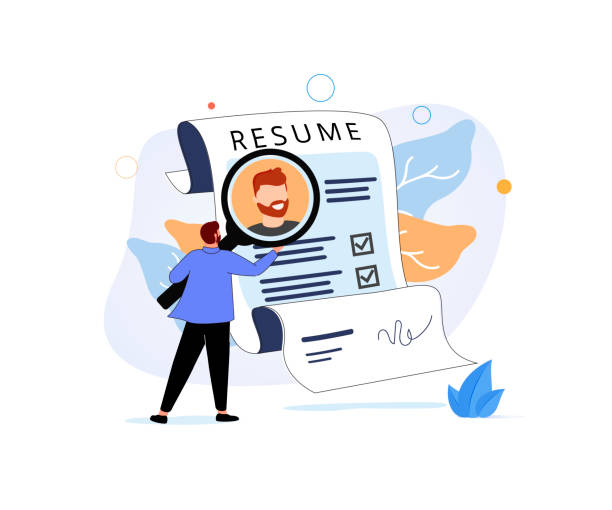
SEO for a multilingual website presents unique challenges that go beyond traditional SEO and require specialized approaches for success in global markets.
The key to success in international SEO for a multilingual website design is the correct use of the #hreflang_tag.
These tags inform search engines like Google and Bing that a particular page has different versions for various languages or regions.
Incorrect Hreflang implementation can lead to SEO problems such as duplicate content and lower your site’s ranking.
Additionally, #local_keywords play a vital role.
Direct translation of keywords is often not enough; extensive keyword research must be conducted for each language and region to identify phrases that local users actually search for in their own language.
This includes understanding cultural differences and local idioms.
Furthermore, #technical_SEO aspects such as website loading speed, mobile compatibility, and the use of CDN (Content Delivery Network) to deliver content quickly to users worldwide become doubly important.
Building local links and using country code top-level domains (ccTLDs) like .de for Germany or .fr for France can help improve SEO rankings in those regions.
Finally, a strong content strategy that continuously provides high-quality, relevant, and localized content for each language is crucial for maintaining and improving search engine rankings.
A deep understanding of these principles and their correct implementation are key factors in the success of an international website in attracting organic traffic and achieving business goals.
This is a critical aspect of multilingual portal development.
Designing a Flawless User Experience for Multilingual Websites
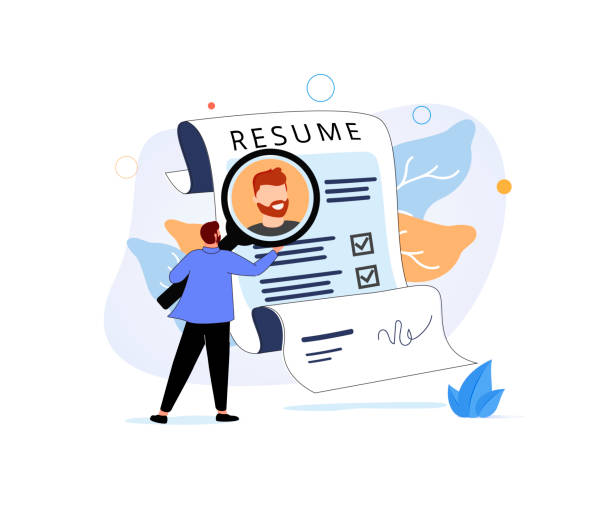
Simply translating content is not enough for multilingual website design; to provide a flawless user experience (UX), finer details that go beyond words must be considered.
#User_interface (UI) and user experience must be designed to be natural and intuitive for each culture and language.
This includes aspects such as writing direction (e.g., right-to-left for Persian and Arabic), date and time formats, currency, and even the use of colors and images appropriate for the #local_culture.
Another vital element is #site_navigation.
The language switcher should be easily accessible and understandable, ensuring users can quickly and smoothly switch between different languages.
Furthermore, content must not only be translated but also localized; meaning the core message is adapted to the cultural norms and interests of the local audience.
This might include changing examples, stories, and even the tone of writing.
Website responsiveness across different devices is also of particular importance, as users worldwide access the internet from various types of devices.
User testing with native speakers of each language can significantly help identify weaknesses in the user experience and improve it.
A successful multilingual portal is one that not only provides information in the desired language but also creates a sense of connection and mutual understanding among users.
This comprehensive approach to UX ensures that users from anywhere in the world will have a pleasant experience on your website and become loyal customers.
Reviewing Powerful Tools and Platforms for Multilingual Websites
![]()
Choosing the right tools and platforms for multilingual website design is one of the most important decisions in the initial stages of a project.
There are several Content Management Systems (#CMS) that offer built-in multilingual capabilities or through plugins.
#WordPress, as the world’s most popular CMS, provides the ability to create powerful multilingual websites with plugins like WPML or Polylang.
These plugins allow you to easily translate content, manage different languages, and optimize international SEO.
#Joomla and Drupal are other CMSs that offer built-in multilingual capabilities or through powerful extensions and are more suitable for larger and more complex projects.
Alongside these CMSs, dedicated translation platforms like Transifex or Lokalise also exist, which facilitate the content translation and localization process and are very useful for large teams or projects with a high volume of content.
These tools provide capabilities for managing translation workflows, collaboration between translators and developers, and ensuring translation quality.
Also, using machine translation APIs like Google Cloud Translation or DeepL can be useful in the initial stages or for less critical content, but for core and sensitive content, high-quality human translation is essential.
Choosing the right platform should be based on the project scale, budget, team’s technical knowledge level, and your business’s specific needs.
A powerful #Content_Management_System and appropriate support tools are the cornerstone of a successful international website that facilitate its management and development.
These tools enable efficient implementation and maintenance of a multilingual portal.
| Platform/Tool | Type | Advantages | Potential Drawbacks |
|---|---|---|---|
| WordPress + WPML/Polylang | CMS with Plugin | Easy to use, large user community, numerous plugins | May become complex for very large projects |
| Joomla! | CMS with Built-in Feature | Strong built-in multilingual capability, good flexibility | Slightly steeper learning curve than WordPress |
| Drupal | CMS with Built-in Feature | Very powerful and scalable, suitable for complex projects | Requires high technical knowledge, higher development cost |
| Transifex / Lokalise | Translation Management Platform | Centralized translation management, team collaboration, quality control | Monthly subscription cost, requires integration with CMS |
Strategies for Maintaining and Updating Multilingual Content
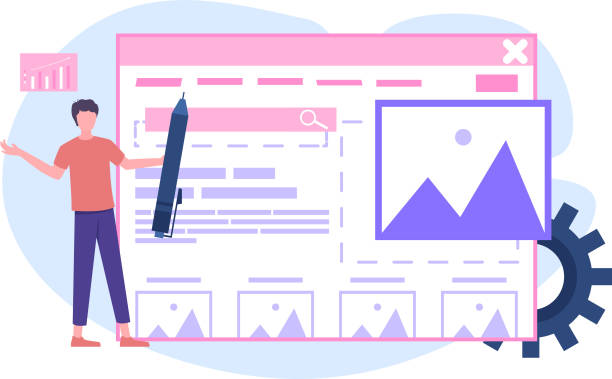
After multilingual website design and launch, the work is not over.
Maintenance and #content_updating in multiple languages is an ongoing process essential for maintaining the quality and relevance of the site for global audiences.
One of the most important strategies is the use of #specialized_translation and localization.
Machine translation can be a good start, but for important, marketing, or specialized content, using native translators who are familiar with the specific culture and idioms of each language is crucial.
This ensures that your message is not only conveyed correctly but also appealing and relevant to local audiences.
Establishing a #content_team or a clear workflow for content updates is also important.
How can changes in the original language version be quickly and accurately transferred to other languages? Using Translation Management Systems (TMS) can automate this process and simplify its management.
Also, monitoring user feedback in each language and making continuous improvements based on this feedback is very important for maintaining a positive user experience.
Your multilingual portal should always be alive and dynamic.
International SEO issues must also be continuously monitored; including Hreflang tag performance, keyword rankings in different regions, and traffic from international sources.
Regular maintenance and active updating not only help maintain site credibility but also lead to sustainable growth in global markets.
Ignoring this step can gradually reduce the value of the initial investment in multilingual website design and diminish its true potential.
Does your current e-commerce website design lead to lost customers and sales?
Rasaweb is your solution with modern and user-friendly e-commerce website designs!
✅ Significant increase in conversion rates and sales
✅ Strong branding and gaining customer trust
⚡ Get free e-commerce website design consultation from Rasaweb!
Does Every Business Truly Need a Multilingual Website? (Thought-Provoking Content)

This is a #thought-provoking and reflective #content: Does every business, regardless of its size or nature of activity, truly need multilingual website design? The answer to this question is more complex than a simple “yes” or “no”.
While for large and international companies, having an international website seems essential and obvious, for a small local business or even a nascent startup, this investment might not be logical at first.
The main criterion for decision-making is to examine the #international_market and the potential for growth beyond domestic borders.
Are your products or services appealing to non-native audiences? Have you received requests from abroad? Are competitors present in global markets? If the answers to these questions are positive, then investing in multilingual website design can be a smart step to #increase_traffic and expand your influence.
Many #success_stories in the digital world originate from a business’s ability to go beyond local markets and reach global audiences.
However, if your target market is strictly local and you have no intention of global expansion, the resources you spend on designing and maintaining a multilingual site might be better invested in other areas of marketing or product improvement.
This question is challenging because it requires a precise evaluation of business goals, available resources, and market analysis.
Ultimately, the decision to implement a multilingual portal should be a strategic one, based on data and real growth potentials, not merely following a trend.
A thorough analysis of your business situation will be the main guide on this path.
The Future of the Web and the Growing Role of Multilingual Websites

The future of the web is increasingly moving towards globalization and borderless access, and in this path, multilingual website design will play a pivotal role.
With significant advancements in #Artificial_Intelligence and #Machine_Translation, the process of content translation and localization will become faster, more accurate, and more cost-effective.
This means that linguistic barriers for businesses and users will increasingly diminish.
There’s no longer a need to worry about language limitations to achieve a #borderless_world.
Imagine platforms that instantly and seamlessly convert content into the user’s language, without the user even noticing the translation process.
This will facilitate access to information and services for billions of people worldwide.
Furthermore, with the growth of Virtual Reality (VR) and Augmented Reality (AR) technologies, which offer interactive and immersive experiences, the need for localized and multilingual content will be even more pronounced.
These technologies allow businesses to connect with their global audiences in new and innovative ways.
Multilingual website design is no longer just a competitive advantage, but will become a standard for any business with global aspirations.
Current trends indicate that the web is moving towards automatically and intelligently customizing information based on the user’s language, location, and even cultural preferences.
This vision offers unparalleled opportunities for businesses to expand and build deeper connections with customers internationally, making the role of multilingual portals even more vital.
For this reason, investing in this area is an investment in the future.
Frequently Asked Questions
| Question | Answer |
|---|---|
| 1. What is multilingual website design? | The process of creating a website whose content is available in multiple languages so that users from all over the world can interact with the site in their own language. |
| 2. Why should we make our site multilingual? | To expand the market, attract international audiences, improve SEO in global search results, and enhance brand credibility and professionalism. |
| 3. What are the methods for implementing a multilingual site? | Using subdomains (e.g., fa.example.com), subdirectories (e.g., example.com/fa/), URL parameters (e.g., example.com?lang=fa), or country code top-level domains (e.g., .ir, .de). |
| 4. Is multilingual site SEO different? | Yes, it requires international SEO strategies such as using the hreflang tag, appropriate URL structure for each language, and keyword research for each language. |
| 5. What considerations should be taken into account when choosing languages? | Language selection should be based on the target market, audience demographics, and current website traffic analysis data. |
| 6. What are the common challenges in multilingual website design? | Challenges related to SEO, translation quality, content management, support for Right-to-Left (RTL) and Left-to-Right (LTR) languages, and user experience. |
| 7. What is the role of CMS in multilingual websites? | Modern Content Management Systems (CMS) (such as WordPress with multilingual plugins or Drupal) offer built-in features or powerful plugins for easy content management in multiple languages. |
| 8. How should content translation be done? | Translation should be done by native and professional translators, not just machine translation, to ensure local tone, culture, and idioms are respected. |
| 9. How is language switching done on multilingual sites? | Typically, a Language Switcher is used in the site’s header or footer, allowing users to easily select their desired language. |
| 10. Is responsive design important for a multilingual site? | Yes, responsive design ensures that the site is displayed correctly on any device (mobile, tablet, desktop), which is crucial for international user access and SEO. |
And other services of Rasaweb Advertising Agency in the field of advertising
Smart UI/UX: A fast and efficient solution for customer acquisition focusing on attractive user interface design.
Smart Social Media: Revolutionize SEO rankings with the help of attractive user interface design.
Smart Digital Advertising: Professional optimization for improved SEO rankings using proprietary programming.
Smart Customer Journey Map: A dedicated service for sales growth based on precise audience targeting.
Smart Marketing Automation: A professional solution for analyzing customer behavior focusing on proprietary programming.
And over a hundred other services in internet advertising, advertising consultation, and organizational solutions
Internet Advertising | Advertising Strategy | Advertorial
Sources
Benefits of Multilingual Website Design
Comprehensive Guide to International Website Design
Best Website Design Companies in Iran
Multilingual SEO: How to Attract International Traffic?
? For your business to soar in the digital world, Rasaweb Afarin Digital Marketing Agency, with expertise in SEO, online advertising, and user-friendly website design, is by your side to ensure a powerful and lasting presence.
📍 Tehran, Mirdamad Street, next to Bank Markazi, Kazeroun Jonoubi Alley, Ramin Alley No. 6


